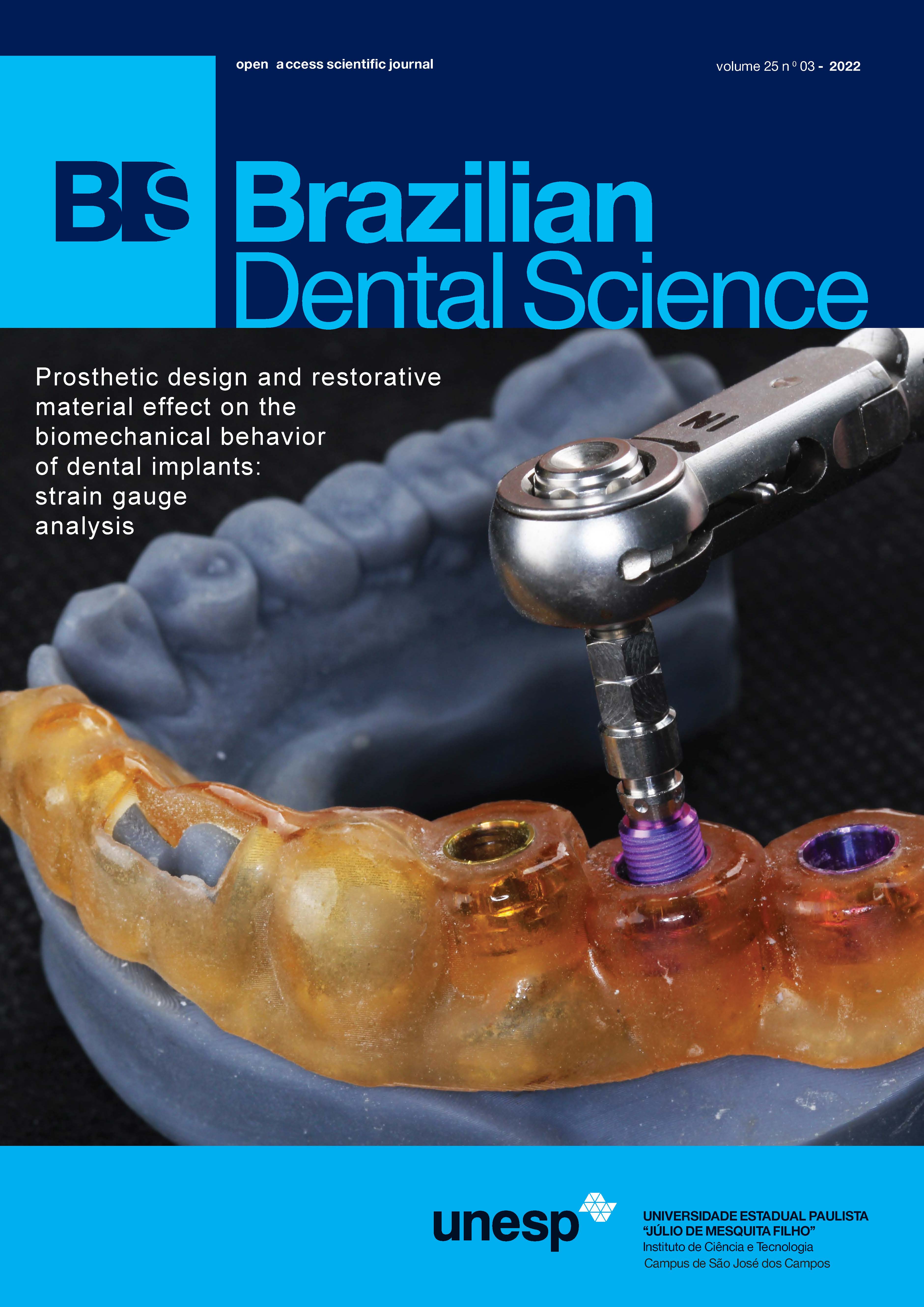Traumatic dental injuries in the primary dentition and sequelae in the permanent dentition: a 7-year retrospective study
DOI:
https://doi.org/10.4322/bds.2022.e3313Resumo
Objective: Traumatic dental injuries (TDIs) affect the aesthetics and function of primary teeth and can cause
sequelae in their permanent successors. This study assessed the distribution of TDIs and sequelae in the primary
dentition and the respective permanent dentition in children treated at the Dental Trauma Centre in Brazil.
Material and Methods: This cross-sectional study was conducted by collecting data from 256 dental records
over 7 years. Descriptive statistical analyses and the Fisher exact test were used (p=0.05). Results: Sixty-two
patients presented with trauma in the deciduous teeth. TDIs were observed mostly in boys (64.50%) and in
the 2 to 4-year age group (44.10%); most injuries occurred from fall from the child’s own height (40.30%) and
at home (71.20%). The most common type of trauma was subluxation (22.90%). The most prevalent clinical
and radiographic sequelae were mobility (45.60%) and periapical lesion (31.80%), respectively. Regarding the
permanent dentition, the most frequent sequela was hypomineralization (33.30%). Conclusion: According to
this study, TDIs in deciduous teeth made up 29.24% of all the cases in the Dental Trauma Program. The major
type of trauma in children was subluxation, with sequelae in both dentitions. Follow-up after trauma is important
to the maintenance of primary dentition and to prevent and treat possible sequelae in the permanent dentition.
KEYWORDS
Deciduous dentition; Dental health; Injury; Permanent dentition; Sequelae.
Downloads
Downloads
Publicado
Como Citar
Edição
Seção
Licença
TRANSFERÊNCIA DE DIREITOS AUTORAIS E DECLARAÇÃO DE RESPONSABILIDADE
Toda a propriedade de direitos autorais do artigo "____________________________________________________________________" é transferido do autor(es) para a CIÊNCIA ODONTOLÓGICA BRASILEIRA, no caso do trabalho ser publicado. O artigo não foi publicado em outro lugar e não foi submetido simultaneamente para publicação em outra revista.
Vimos por meio deste, atestar que trabalho é original e não apresenta dados manipulados, fraude ou plágio. Fizemos contribuição científica significativa para o estudo e estamos cientes dos dados apresentados e de acordo com a versão final do artigo. Assumimos total responsabilidade pelos aspectos éticos do estudo.
Este texto deve ser impresso e assinado por todos os autores. A versão digitalizada deverá ser apresentada como arquivo suplementar durante o processo de submissão.




























